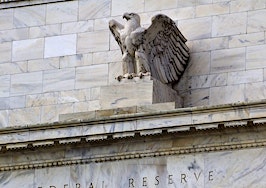- Mortgage rates are determined in the market by a huge variety of supply and demand factors that are themselves often imponderable.
- Rates fell further and stayed low longer than virtually any analyst had foreseen.
- It’s possible to see another “tantrum” event if the Fed decides to refocus its tightening strategy away from rate increases.
- Tell your clients that a 5.5 percent mortgage rate at the end of 2017 is unlikely, but not completely out of the question.
There’s an old saying that forecasting is hard, especially if it’s about the future.
And there may be nothing harder to forecast than mortgage rates.
They are determined in the market by a huge variety of supply and demand factors that are themselves often imponderable. These include domestic housing statistics like home sales and construction, credit availability, oil prices, geopolitical developments and many others.
Despite bold claims, no one has a perfect track record in this regard, and we shouldn’t expect to find an oracle to point us in the right direction anytime soon.
But broad trends can be seen in the mortgage market that provide insights into how to run our businesses.
Analysts missing the mark
Mortgage rates fell further and stayed low longer than virtually any analyst had foreseen. Having misunderstood this trend, many in the housing business missed out on opportunities to take advantage of the extended period of high affordability in the market.
At this point, I think there’s a risk that everyone in the market believes that rates can’t go a fair amount higher — which may be as big a mistake as not seeing the decline in the first place.
There are a lot of reasons why this may be the case, including:
- The unemployment rate at 4.6 percent is historically very low, and this could be a signal of rising wage and price growth in the course of 2017.
- The price of oil has rebounded sharply, rekindling inflation fears.
- The incoming Trump administration may be poised to institute tax cuts and spending increases, which could boost growth, inflation and the budget deficit.
- Regulatory reform could encourage loosening credit standards that boost mortgage demand.
- Policy uncertainty is adding a risk premium to long-dated fixed income assets, especially in mortgages.
Where does the complacency come from?
One reason that many are complacent about rising rates is the experience of the “Taper Tantrum” in May 2013.
Federal Reserve Board Chairman, Ben Bernanke, in May of that year gave a speech in which he said that the central bank would begin slowing (tapering) its purchases of mortgage securities that it was conducting as part of its “quantitative easing” (QE) program in support of its accommodative monetary policy.
This caught the market completely by surprise, and the 30-year fixed mortgage rate soared from 3.5 percent to 4.5 percent in a virtual eyeblink.
It didn’t take long, however, for markets to realize that this reaction was overdone, and by early 2015 mortgage rates were back to 3.6 percent.
But that was then. In 2013, the unemployment rate was 7.5 percent and the price of oil was over $100 per barrel and poised to plunge by over 50 percent beginning in 2014.
The situation now is quite different. Moreover, it’s possible to see another “tantrum” event if the Fed decides to refocus its tightening strategy away from rate increases and more toward reducing the size of its investment portfolio, which it would likely accomplish by not replacing maturing securities as it does at present.
Remember: This isn’t a forecast. I can think of reasons why rates could fall again — notably a pick-up in geopolitical tensions that leads to safe-haven buying of U.S. financial assets.
What I’m saying is, be prepared. Tell your clients that a 5.5 percent mortgage rate at the end of 2017 is unlikely, but not completely out of the question. Have suggestions for how they can maneuver in this kind of environment. For example, the cost of financial hedges is only average for the recent period and well below the peak experienced in 2013.
It may not be a comfortable world, but they’ll remember that you were the one who got them thinking about it.
Richard Koss is Director of the Global Housing Watch at the International Monetary Fund and Adjunct Professor at the Carey School of Business at Johns Hopkins University.
The views expressed in this article are those of the author and should not be ascribed to the IMF or IMF Policy.











